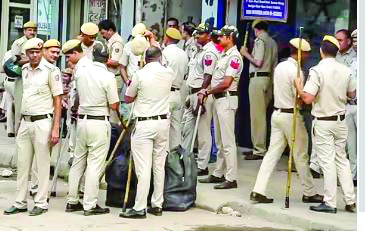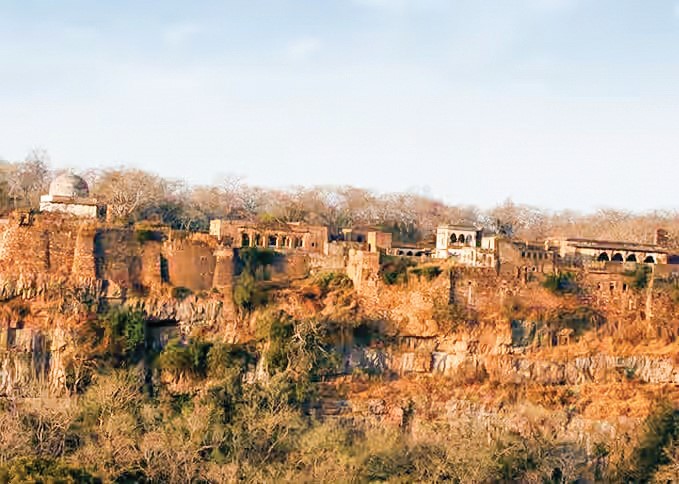
The Khandar Fort is situated in the Sawai Madhopur district. It provides tourists with a rare combination of architectural beauty, spiritual importance, and gorgeous scenery. As you explore its aged walls and old temples, you’ll be transported to a time of valiant warriors, smart strategists, and lavish royal lives.
The Unbreakable Citadel
Khandar Fort’s reputation as an insulated bastion is not without merit. Located on a high hill surrounded by tough terrain, the fort’s inherent defenses made it a prized possession for monarchs throughout history. Its strategic location on the outskirts of Ranthambore National Park adds to its attraction, providing stunning vistas of the nearby wildness.
A Chronicle of Conquest
The fort’s history is as complex and layered as its architecture. Originally built by the Kshatriya Badgujar rulers, it changed hands multiple times over the centuries. The Sisodia kings of Mewar, the mighty Mughals, and finally the Maharajas of Jaipur all left their mark on this formidable citadel. Each transfer of power brought new additions and modifications, creating a fascinating palette of architectural styles and historical narratives.
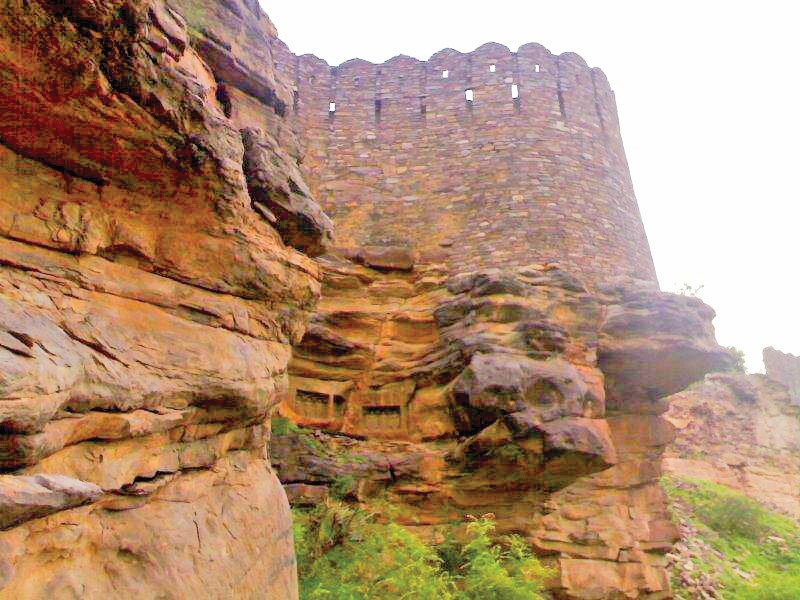
Treasures of the Past
As you approach Khandar Fort, you’ll be greeted by three imposing entrances. Though time has taken its toll, these gateways still exude an air of grandeur, hinting at the fort’s former glory. The massive stone walls, punctuated by four strategically placed bastions, showcase the military ingenuity of medieval Indian architects.
A Spiritual Sanctuary
Within the fort’s protective embrace lie seven temples, each a tribute to the religious devotion of its various rulers. The ancient Jain temple, adorned with exquisitely carved rock idols of Jain Gurus, stands as a masterpiece of sculptural artistry. The Hanuman temple, housing a single stone idol of the monkey god with a vanquished demon at his feet, radiates an aura of divine protection.
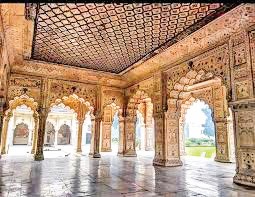
Other notable shrines include:
1. Chaturbhuja Temple: Home to an impressive four armed deity
2. Gobind Devji Temple: A place of worship for devotees of Lord Krishna
3. Jagatpalji Temple: Steeped in local legends and folklore
4. Jayanti Mata Temple: Site of an annual fair that draws pilgrims from far and wide
The Rani Temple
Perched atop the highest platform of the fort, the Rani Temple stands as the most magnificent structure within Khandar’s walls. This royal sanctuary, built for the ladies of the court, offers panoramic views of the surrounding landscape and serves as a poignant reminder of the fort’s regal past.
Ancient engineering, life giving Waters
The fort’s ability to withstand long sieges owed much to its sophisticated water management systems. The two enormous tanks, Ramkunda and Laxmankunda, along with seven smaller ponds (four of which remain visible today), ensured a steady supply of water for the fort’s inhabitants.
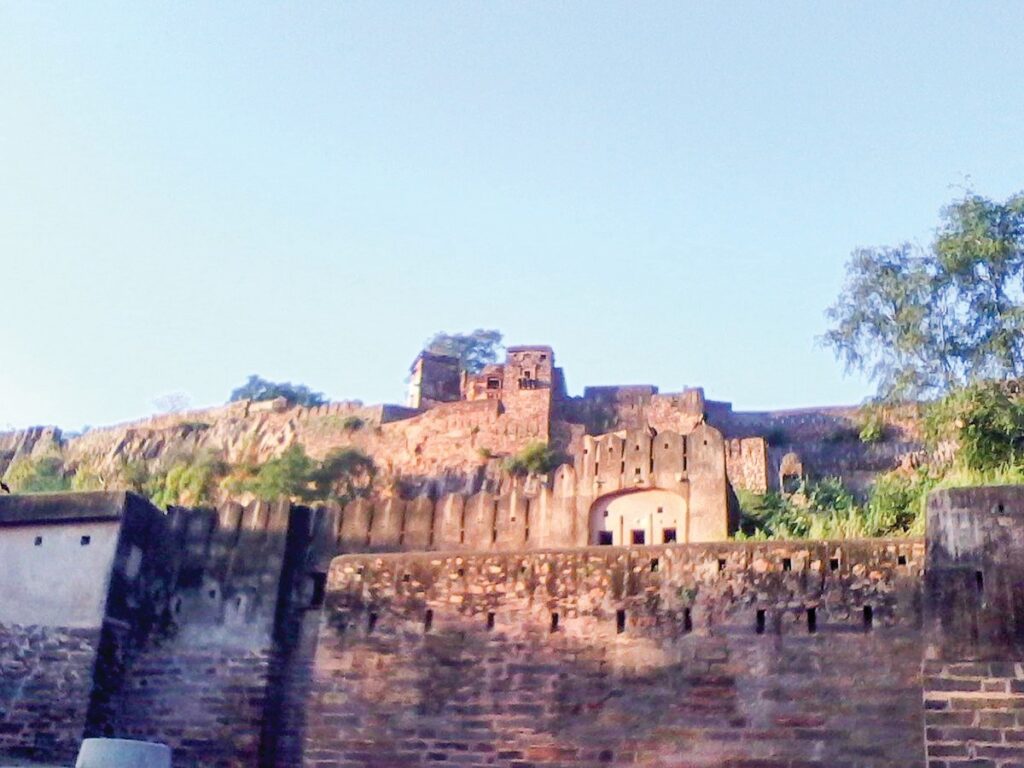
A Fortress in the Wilderness
Khandar Fort’s proximity to Ranthambore National Park adds an element of wild beauty to its historical charm. Visitors may catch glimpses of the park’s diverse wildlife, including langurs, monkeys, and occasionally even tigers and leopards. This unique juxtaposition of human history and natural splendor creates an unforgettable experience for travelers.
Why Khandar Fort Deserves Your Visit?
For history enthusiasts, Khandar Fort offers an unparalleled opportunity to walk in the footsteps of India’s great rulers. From the early medieval period to the twilight of the Mughal Empire and the rise of the Rajput states, the fort encapsulates centuries of political intrigue, military strategy, and cultural evolution. Architecture buffs will find themselves captivated by the fort’s diverse structural elements. The blend of Hindu and Islamic architectural styles, evident in the arches, domes, and decorative motifs, showcases the syncretic nature of Indian art and design. The massive walls, ingenious water systems, and strategically placed bastions offer insights into medieval military architecture.
The seven temples within the fort complex provide a unique opportunity to explore the religious landscape of medieval Rajasthan. From Jain asceticism to Hindu devotion, these sacred spaces offer a glimpse into the spiritual lives of the fort’s former inhabitants. The annual fair at Jayanti Mata Temple adds a vibrant, living dimension to this religious heritage.
Nature and History Intertwined
Khandar Fort’s location on the edge of Ranthambore National Park makes it a perfect destination for those seeking to combine historical exploration with nature appreciation. The possibility of spotting wild animals from the fort’s ramparts adds an element of excitement to every visit.
Photographer’s Paradise
For photographers, Khandar Fort is a dream come true. The interplay of light and shadow on ancient stones, the panoramic views of the surrounding wilderness, and the intricate details of temple carvings provide endless opportunities for capturing stunning images.
Practical Information for Visitors
Getting There
l Nearest Railway Station: Sawai Madhopur (11 km away)
l Nearest Airport: Jaipur International Airport (197 km away)
l Local Transportation: Buses and taxis are available from Sawai Madhopur to the fort.
Best Time to Visit
The ideal time to explore Khandar Fort is between October and March, when the weather is pleasant and conducive to outdoor exploration.
Preserving a Priceless Heritage
As you stand atop Khandar Fort’s crumbling defensive walls, looking out over the wild stretch of Ranthambore, you can feel the weight of history pushing in from all sides. This beautiful monument, once a symbol of power and distinction, today provides an important link to India’s rich history.
Places like Khandar Fort provide us with a unique opportunity to travel back in time and reconnect with our roots. Its stones tell stories of courage, its temples reverberate with old prayers, and its mere existence exemplifies the undying spirit of human inventiveness and tenacity.
So, whether you’re a history buff, a spiritual seeker, a nature lover, or just a curious tourist, Khandar Fort has open gates and centuries of stories to share. Come explore its meandering corridors, marvel at its architectural wonders, and be transported to a time when fortifications like these were the height of human endeavor.





